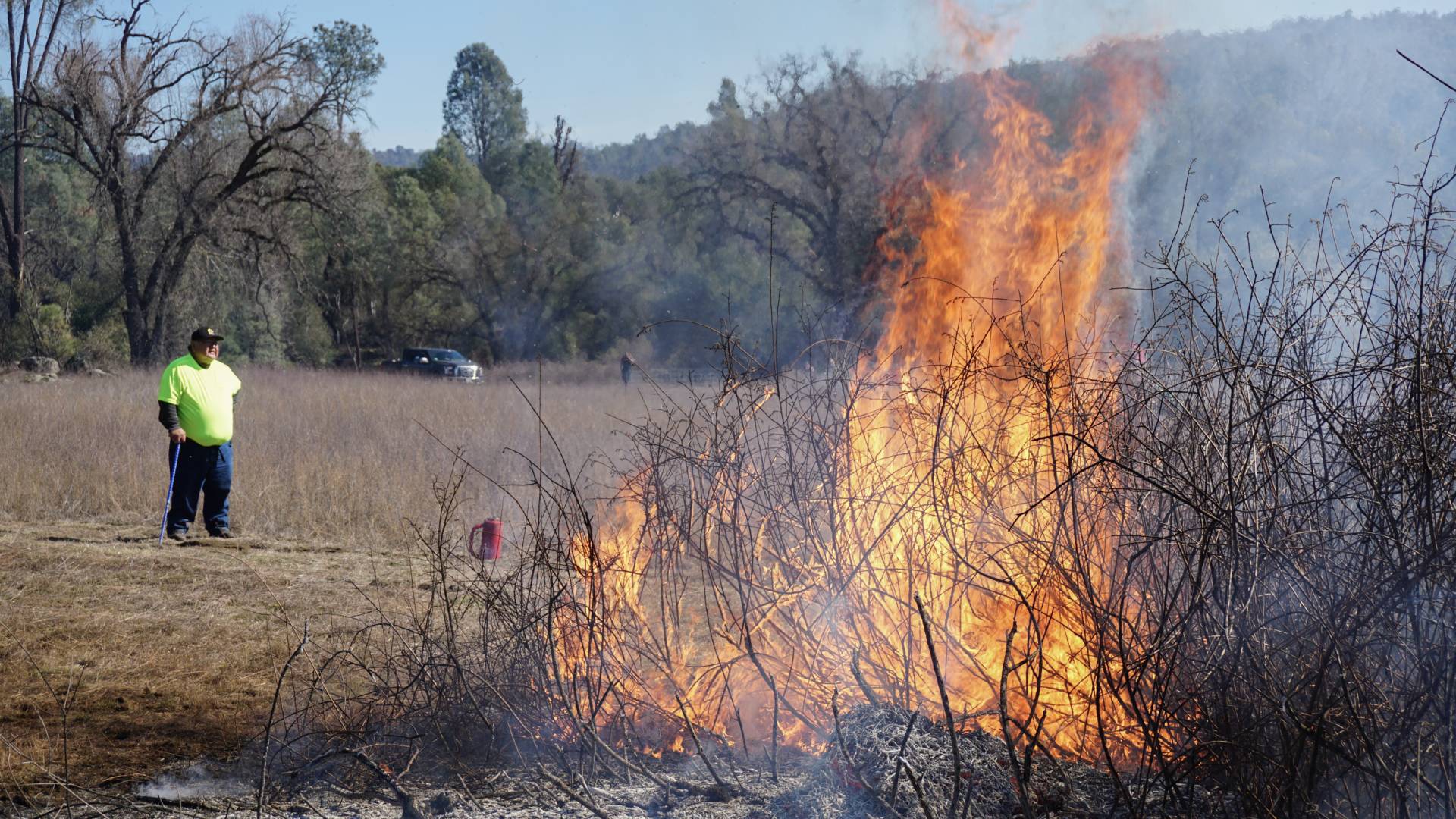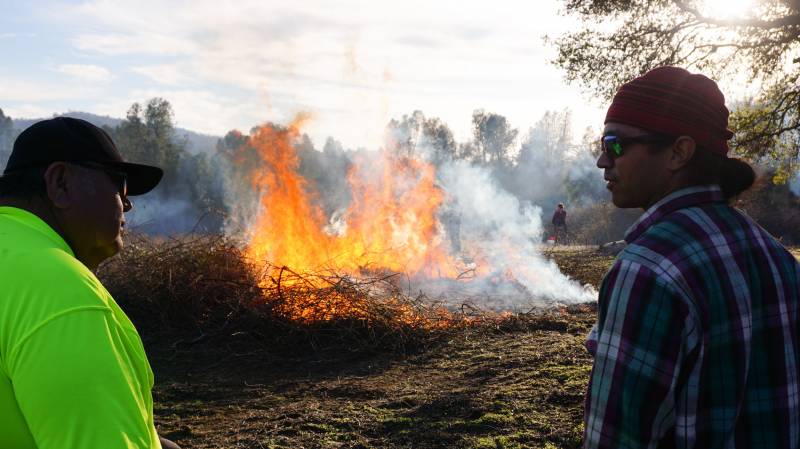Ray Gutteriez then takes a lighter to burn the plant, which encourages new growth that produces the flexible, straight branches prized by weavers. The plant is adapted to fire. Its root stock remains intact after burning and will quickly resprout after spring rains.
"All of our basket material needs to be tended to in some way," Gutteriez says, an ecologist and member of the Wuksachi Band of Mono Indians. "So they need to be burned, and they're used to being burned. And then next year, we'll probably have sticks that are 6, 7 feet tall in one year."
The group also burns a large field, several acres across, which is choked with dead grass.
"When I was a kid, I learned from my mother," Goode says of when he first started doing cultural burning. "But my mother got in trouble when she burned because the fire department didn't want her doing what we're doing today."
History of Suppression
Before 1800, several million acres burned every year in California due to both Indigenous burning and lightning-caused fires, far more than even the worst wildfire years today. Tribes used low-grade fires to shape the landscape, encouraging certain plants to grow both for tribal use and to attract game.
The arrival of Western settlers dramatically changed the fire regime.
"They came with their concepts of being afraid of fire," Goode says. "They didn't understand fire in the sense of the tool that it could be to create and what it did to help generate and rejuvenate the land. So they brought in suppression."
The U.S. Forest Service infamously had the "10 a.m. policy": to put out all forest fires by 10 a.m. the next day. Without regular fires to clear out underbrush, forests quickly became overgrown, creating the conditions for more extreme fires.
"A cultural burn is very spiritual," Keith Turner of the North Fork Mono says. "I used to fight fire for the Forest Service. And it was all about fighting fire."
Native American tribes were forcibly displaced, and their religious ceremonies were banned throughout the state by the early 1900s.
"There was actually a bounty on California Indian people," says Beth Rose Middleton Manning, professor of Native American studies at the University of California, Davis. "The governor had announced a war of extermination. So you have all that history, and it really fostered removal — settler ownership of Indigenous lands."
Now, Goode and other tribal leaders have been reaching out to ecologists, researchers and fire agencies about the importance of Indigenous knowledge.
"I think it's really important that we don't think about traditional burning as: what information can we learn from native people and then exclude people and move on with non-natives managing the land," Middleton Manning says. "But that native people are at the forefront and leading."
Forming Partnerships
With wildfires causing record-breaking destruction in the last few years, California has committed to reducing the vegetation on a half-million acres. The federal government has set a similar goal. But there's a long way to go to reach those numbers, and controlled burning can be challenging in landscapes with too much fuel.
"Fire is a very wicked problem when you have years of suppression, because the longer you don't have fire in the system, the harder it is to put it back in," says Jonathan Long, ecologist with the Forest Service's Pacific Southwest Research Station. "So what we're trying to do is get these footholds."
In Northern California, the Karuk and Yurok tribes have partnered with the Forest Service to manage land for traditional values and wildfire management. Studies have shown that the two goals work hand in hand.


9(MDAxOTAwOTE4MDEyMTkxMDAzNjczZDljZA004))
